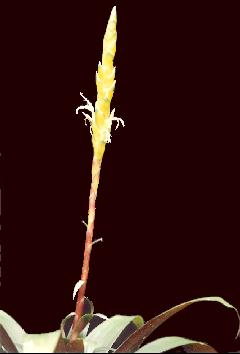
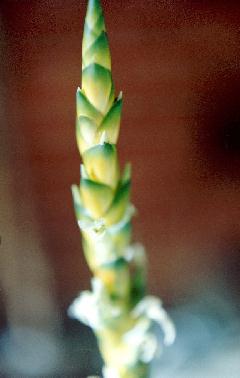
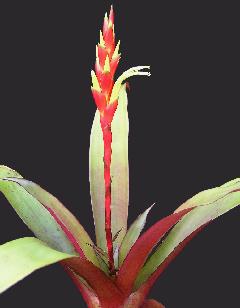
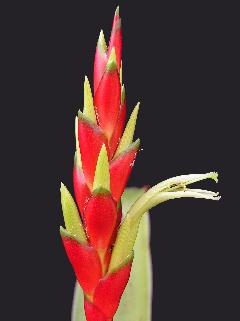
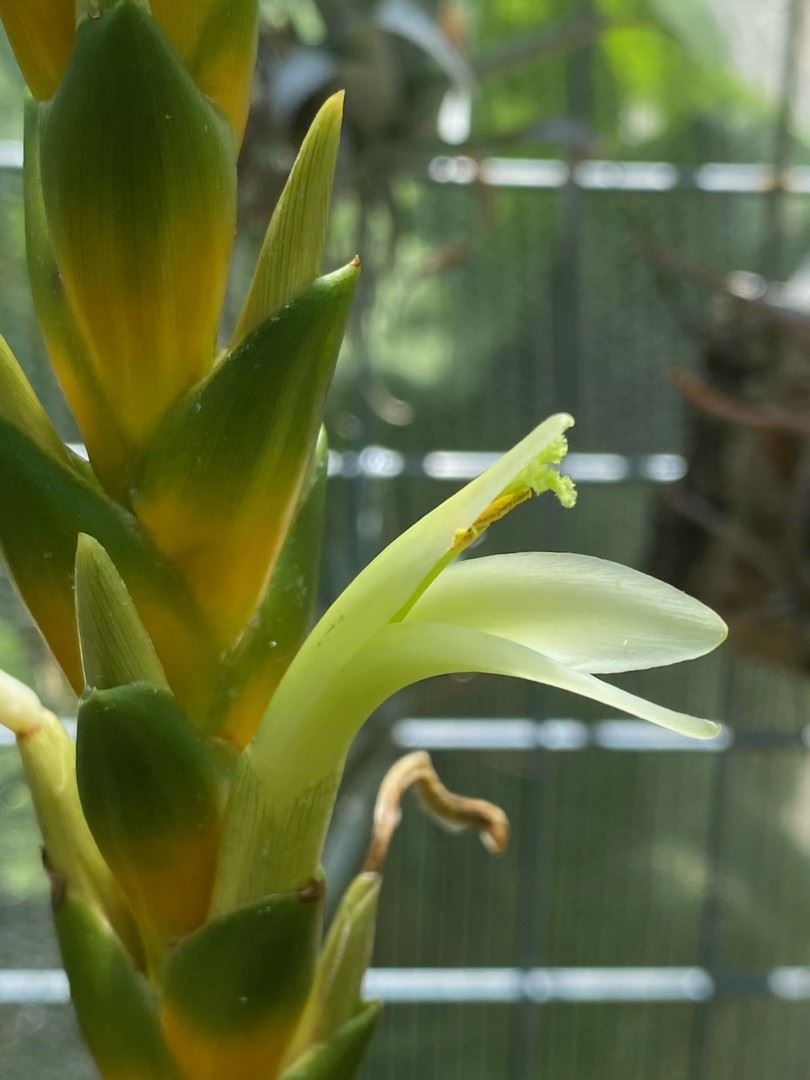
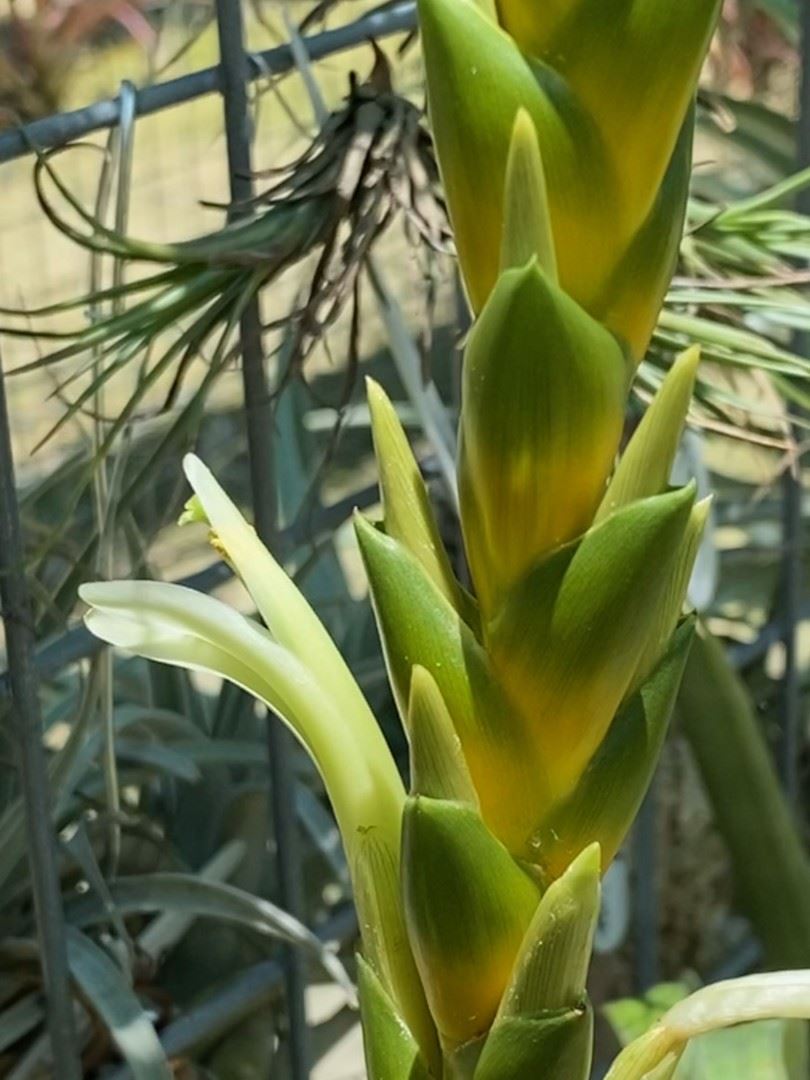
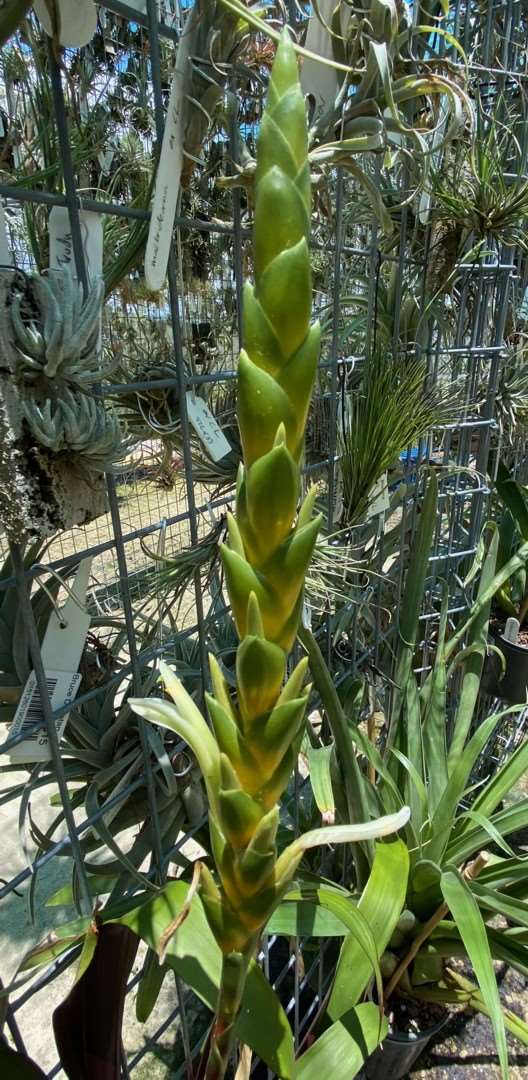
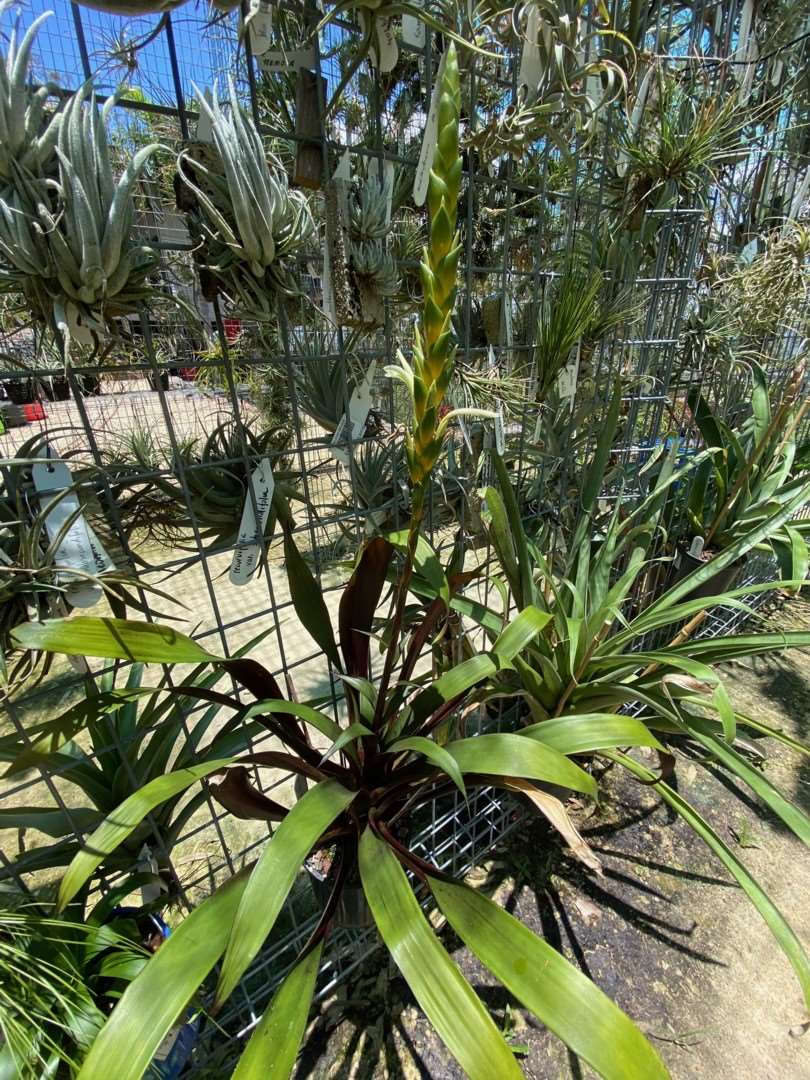
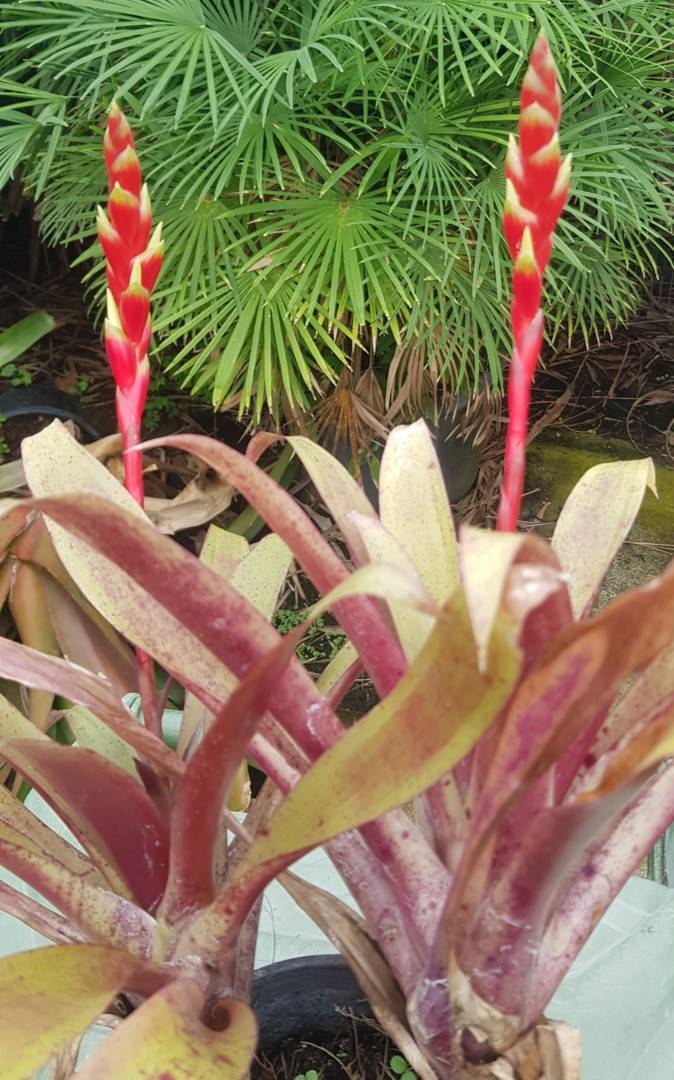
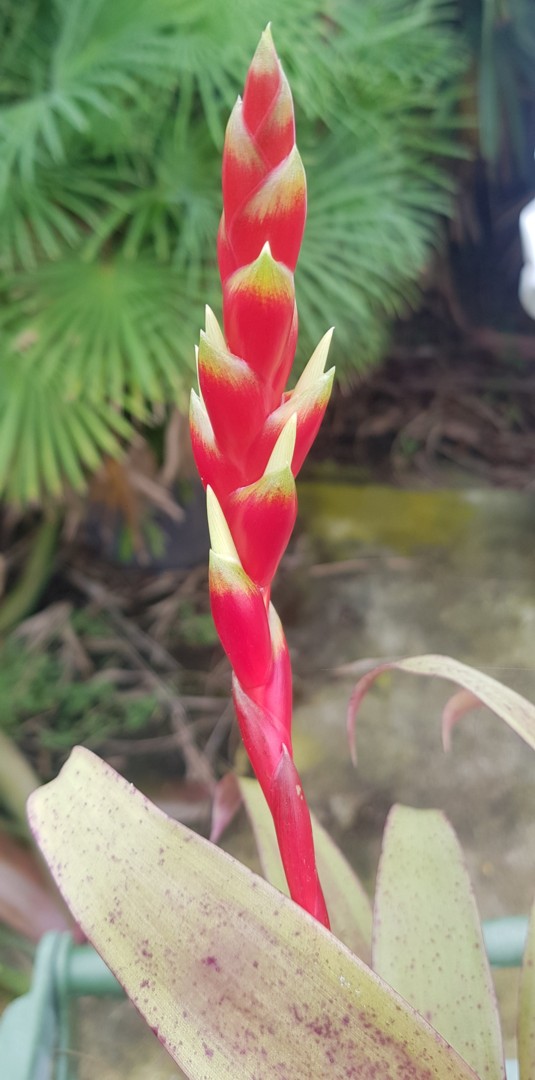
Vriesea malzinei var malzinei
Tillandsia malzinei (E. Morren) Baker, Rep. Kew Gard. "1878": 59. 1879.
Flowers in more than 2 ranks.
Type. Malzine in Liege Hortus s n (clonotype LG), Cordoba, Vera Cruz, Mexico, 1870; cultivated and flowered in Liege 1872.
DISTRIBUTION. At 350 m, Mexico.
MEXICO. San Luis Potosi: Tamazunchale, Wilson s n (GH). Oaxaca: Cerro Nariz, Usila, 17º 40' N, 96° 32' W, 19 Apr 1939, Schultes & Reko 666 (GH).
Vriesea malzinei var disticha L. B. Smith, Phytologia 22: 87,fig. 8. 1971.
Vriesea malzinei var. disticha L.B.Sm.: placed in synonymy with the type variety - Espejo-Serna, A., A. R. L-Ferrari (2004) Checklist of Mexican Bromeliaceae with notes on species distribution and levels of endemism. Selbyana; journal of the Marie Selby Botanical Gardens 25(1):33-86. Not accepted in Binomials. But because the distichousness is only subdistichous (a slight spiral) decided to treat this with the type.
Flowers distichous.
Type. Greenwood s n (holotype US), Mal Paso highway north of Ocozocoautla Chiapas, Mexico, 14 April 1969; MacDougal 1814, cultivated and flowered 19 May 1969
DISTRIBUTION. Known from the type collection only.
Eizi Matuda in Cact. Suc. Mex. XIX: 23-4. 1974
A hundred years ago, from young plants collected near Cordoba, State of Veracruz, and sent to Belgium, E. Morren described Vriesia malzinei. From that time no collection of this species is known with the exception of some material sent to Kew in 1880 which Baker mentions under the name of Tillandsia malzinei. As a curiosity it is important to point out that Baker's illustration shows only one scale at the base of the petiole, a character that led Baker to treat this species in the genus Tillandsia, since Vriesia is characterized by bearing a pair of such scales.
Dr. Alfred Lau last year went swimming at Presa Miguel Aleman, in Oaxaca, and he went near a cliff where he saw some plants that caught his attention. After swimming he went to the cliff and collected some specimens which were presented to the author, which proved to be none other than the lost Vriesia malzinei E. Morren.
A description of the species follows
Plant acaulis, simple, with numerous leaves forming a rosette, reflexed.
The plant is very similar to Rhoea bicolor without the inflorescence, having mulberry colour leaves on the outside and greenish on the inside, narrow, ligulate.
Leaves 30-35cm long, 3-4cm wide.
Scape erect, simple, 25cm long,
Scape bracts imbricate, the bottom ones longer and wider than the upper ones, acute linear
Inflorescence simple, cylindric, polystichous or subdistichous, 17cm long, bracts densely imbricate, with 12 to 24 flowers
Floral bracts leathery, ecarinate, broad oval, obtuse, 25mm long, 28mm wide, shorter than the sepals, red with the tip and edges green
Flowers erect, semi-imbricate, 7-8cm long. pedicels short and thick.
Sepals elliptic, obtuse, 32mm long, green.
Petals linear, almost white, simple, with two scales at the base of each petal,
Stamens included, style exserted